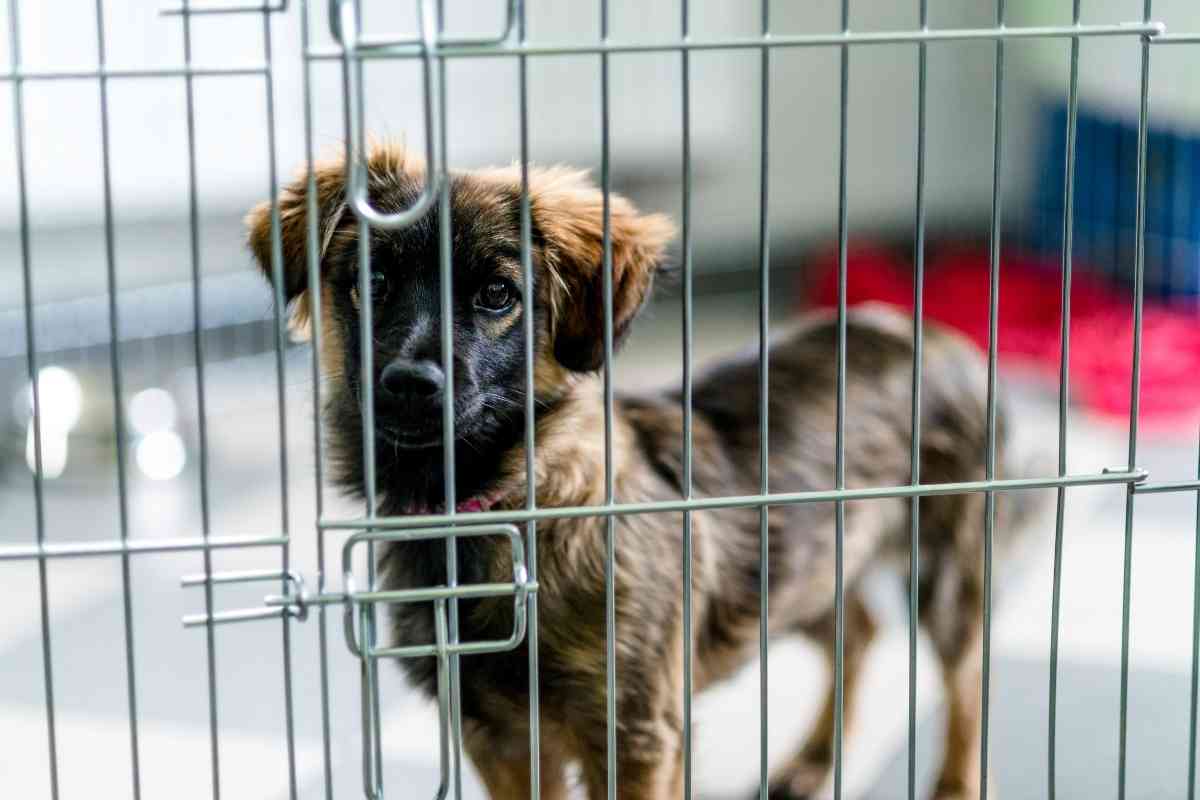How Long Should You Let A Puppy Cry In The Crate?
Crate training is one of the most effective and efficient ways of training your dog, especially while there is still a puppy. However, crate training your new puppy has its challenges like any other method. Additionally, some people want you to believe that crate training is not humane and cruel. According to most animal humane societies and dog experts, crate training is not harsh and is advisable. One of the main challenges most pet parents face when crate training is how long to let the pup cry in a crate?

How Long Should You Let A Puppy Cry In The Crate?
Never leave your puppy to cry in a crate for more than five minutes for the first few weeks after adopting them. While you mustn’t go rushing every time you hear your puppy whining, it is also advisable to not ignore them so much, especially at the early stages of crate training your dog.
If you ignore their cries, they may develop a negative feeling or perspective towards the crate. In contrast, if you rush to their attention immediately after they start crying, they may create a habit of crying, so you let them out. The primary and most important thing is to do crate training properly and do it in a way that encourages your puppy to participate and be willing to accept crating.
Like any form of training your will expose your puppy to, you will face challenges when crate training your puppy. So, how do you effectively crate train your puppy, and what are some of the challenges you will face? Read on to find out more!
Crate Training Explained
When done the right way, crate training can be a great and helpful
If you follow and implement crate training correctly, it will be a “win-win” for everyone, especially your new puppy.
Is Crate Training Okay?
This is one of the major concerns about crate training that most pet parents may have. Yes, crate training is okay!
Naturally, dogs are den animals. While in the wild, a dog will have a den which is both their haven and home. The shelter provides them with a safe space to retreat, sleep and even raise their puppies without worrying about outside threats or danger.
Now, for your newly adopted puppy, the crate is the best way for you to fulfill their instinctual need for their own safe space. If you introduce and use it correctly, your puppy’s crate will be a comfort haven for them. It will be where they will nap and even hide whenever it storms.
You will even find them lying in their crate for no reason other than that it is “their space.”
How Long Can I Let My Golden Doodle Puppy Cry?
It is best if you let the Golden Doodle puppy whine until they stop, provided you have taken care of all their needs. Do not rush to let them out immediately after they start crying since it will encourage them to cry out louder and longer next time. Let them cry for five minutes when you start crate training and increase the duration with time.
However, do not leave your puppy in the crate for a whole day. They may develop a phobia about the crate and refuse to get in every time you try. They may also end up crying even more.
The Process of Crate Training Your Puppy

There are many different crates available at local and online pet supply stores. Some of these crates are plastic, while others are collapsible metal pens. The crates are also available in different sizes and as such, remember to choose one with enough space for your puppy to turn and stand.
The process of crate training your puppy does not have a clear expected completion period. It depends on your puppy’s past experiences, age, and temperament. In most cases, this process may take anywhere from a few days to several weeks.
Before you begin training your puppy, two things you need to know for the process to be effective are; to ensure the crate training process is a pleasant and positive experience for your dog and that the training should be done in small steps.
#1: Familiarizing the Puppy With A Crate
Ensure that the crate you will be using is in the sitting room or any other place in your home where people spend most of their time. Place a soft towel or blanket in your puppy’s crate. Ensure that the crate’s door is secured after opening so it does not frighten or hit the puppy.
Bring the puppy over to the crate while talking to them positively and calmly.
Slowly motivate the puppy to get into the crate by placing small amounts of treats close to the crate. Follow this up by placing the treats inside the door and then close to the back of the crate.
Getting the puppy into the crate may take a few minutes to several days. Do not force the puppy inside the crate; this process needs to be done slowly and patiently. You may use treats, food, or favorite toys to entice them to get into the crate.
# 2: Serving Your Puppy Meals While They Are in The Crate
Once your puppy has familiarized themselves with the crate, you may start serving them their meals in the crate. This is another way of making your puppy associate the crate with a good experience.
When you begin serving them their meals in the crate, do not initially put the food dish at the back of the crate. Start by placing the food inside the crate but closer to the door, and then move it to the back once they are comfortable.
When they are comfortable enough, you may start closing the crate door while the puppy is eating and immediately open it when they finish their meal.
Slowly start increasing the time the door remains closed after they finish their meals with successive meals.
# 3: Conditioning Your Puppy to Stay in Their Crate for Shorter Periods
BY now, your puppy should be used to their crate, and if you have done the process slowly and correctly, they should not have any anxiety or fear of getting into their crate. You may start confining them to the crate for short periods while you or other family members are around.
When beginning this stage, always call them to their carte and reward them with a treat if they come. Immediately after this, give the puppy the command to get into the crate. If they do so, praise and reward the puppy with another treat.
Close the crate door, stay near the crate for around 10 minutes, and then go out of sight for a few minutes. Return to the crate and sit quietly for a few more minutes before opening the crate door and letting the puppy out.
Repeat the procedure several times each day while slowly increasing the time you are out of sight of the puppy. The main aim is to get the puppy used to staying in their crate while it is locked for at least 30 minutes with you out of sight.
# 4: Crating the Puppy for Longer Periods When You Are Not Around and at Night
Once your puppy can stay in the crate for shorter periods without being anxious, sad, or afraid, you may start training them to sleep in their crate through the night. You may also start crating the dog when you leave for short periods, i.e., when you leave for 20 or so minutes.
If you leave the puppy in a crate and return later, do not reward them for displaying exciting behavior. Ensure that you also keep your return low-key.
Also, continue crating the puppy whenever you are at home so that they do not end up associating the crate training process with you leaving them alone.
If you are looking to crate the puppy throughout the night, you might want to place the crate close to where you sleep for the initial stages of the process. This will help you hear your puppy at night when they want to be taken out to relieve themselves.
You may start moving the crate to your desired location slowly once the puppy is used to sleeping in the crate throughout the night.
Potential Problems Of Crating Your Dog
Crating the Puppy for Longer Periods
Ensure you do not end up crating the dog for longer periods and leaving them alone for longer periods throughout the night. Even though it can be a good idea to crate them for longer periods during the night while they sleep, ensure you give them potty breaks.
Also, ensure you cater to all their emotional and physical needs during the day if you intend to crate them during the night.
Should I Let My Puppy Cry in His Crate?
If you have tended to every need your puppy may have, and you have down the training gradually and correctly, your puppy can stay in the crate for about 2 to 3 hours before they need a break.
If you put them in the crate after taking care of all their needs and they start whining, do not immediately go and let them out. Let them cry it out, and they should stop if nothing is disturbing them.
If the crying continues for a longer time even though you have taken care of all their needs, it may be a sign that you should redo the crate training process.